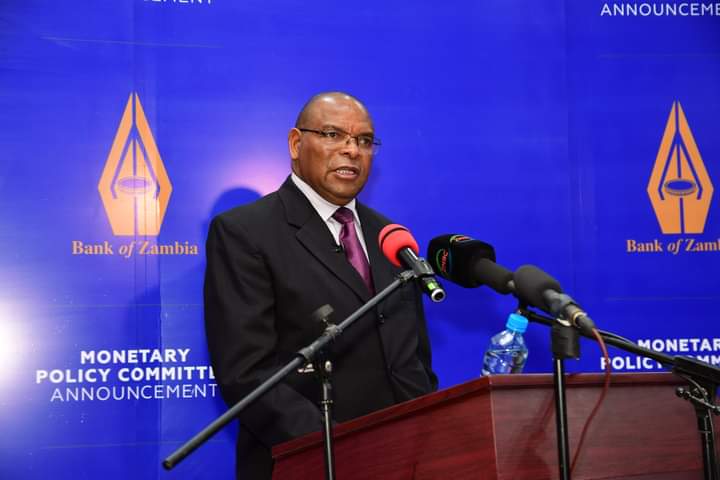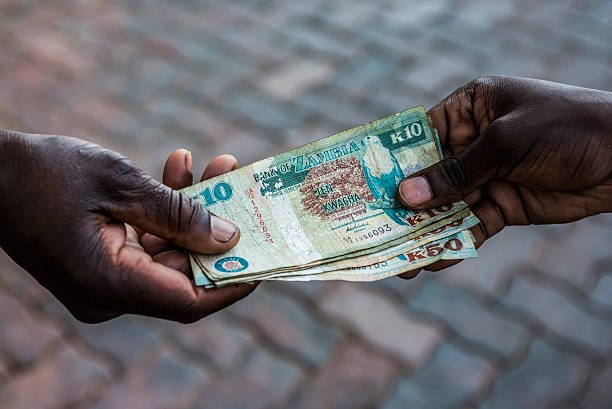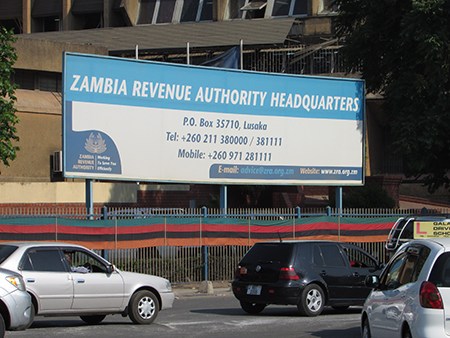• The decision to maintain the policy rate is due to the sharp decline in inflation rate.
• Inflation is projected to decline towards the target range of 6 to 8 percent by the end of 2023.
• Food inflation declined sharply to 16.1 percent from 24.5 percent.
Bank of Zambia has maintained the Monetary Policy Rate for the second quarter of the year at 9 percent.
Speaking at a media briefing, Bank Governor Dr. Denny Kalyalya attributed the Monetary Policy Committee (MPC)’s decision to maintain the policy rate to the sharp decline in inflation rate over the last three quarters and its projected further decline towards the target range of 6 to 8 percent by the end of 2023.
He noted that annual overall inflation continued to decline in the first quarter of this year, reducing by 14.1 percent, driven by dissipation of shocks to prices of meat products and fish, lagged pass-through from the appreciation of the Kwacha against the US dollar and improved supply of fish and fresh maize.
“The underlying factors the Committee considered included the positive efforts in implementing fiscal consolidation measures, relatively weaker growth prospects over the medium-term, as well as lingering vulnerabilities and risks to the financial sector. However, upside risks to the inflation outlook include increases in global energy and food prices, exacerbated by the ongoing Russia-Ukraine conflict, outbreaks of more infectious strains of Covid-19, tighter global financial conditions, and the projected grain deficit in some of our neighboring countries.”
“Food inflation declined sharply to 16.1 percent from 24.5 percent, while non-food inflation edged down to 11.6 percent from 12.5 percent.” In April annual overall inflation decreased, for the ninth consecutive month, reducing to 11.5 percent from 13.1 percent in March. Increased supply of mostly vegetables and solid fuels was key to the decline in inflation,” Dr. Kalyalya said.
He revealed that inflation is expected to continue declining towards single digits over the next eight quarters, adding that in 2022, the rate is projected to average 12.5 percent and later drop to 8.9 percent in 2023.
“Underlying these projections are mostly the effects of enhanced fiscal consolidation, anchored on the resolution of external debt overhang, supported by an International Monetary Fund (IMF) Extended Credit Facility. These combined are expected to boost market confidence, anchor inflation expectations, positively impact macroeconomic stability, and ultimately contribute to growth that has remained remained subdued for some time,” he stated.
This is the second time this year the Central Bank is maintaining the Monetary Policy Rate at 9 percent.
And Dr. Kalyalya disclosed that the domestic economy slowed down in the first quarter of 2022 due to higher input prices and rising fuel prices on the international market.
Meanwhile, the Central Bank Governor said the Kwacha depreciated by 3.7 percent against the United States dollar to an average of K17.76 ngwee in the first quarter of 2022.
Dr. Kalyalya attributed the weakening of the currency during the quarter under review to excess demand for foreign exchange, mainly for importation of petroleum products.
Dr. Kalyalya stated that the Central Bank continued to support the market with an injection of US$372 million in order to stabilize the exchange rate.
“To moderate the volatility in the exchange rate, the Bank of Zambia continued to support the market. In this regard US$372.0 million was provided to the market. This was mainly facilitated by foreign exchange, chiefly for importation of petroleum products.”
Meanwhile, Dr. Kalyalya disclosed that Gross international reserves increased to 2.9 billion US dollars at the end of March 2022 from 2.8 million US dollars as at December last year on account of mining tax payments and receipt of project funds, while debt service and support to the foreign exchange market were the key uses of the inflows.
He however noted that the months of import cover reduced to 3.6 from 4.4 due to the upward revision of projected imports for this year.
The Central Bank further indicated that the weighted average Treasury bill and Government bond yield rates declined by 0.3 percent and o.2 percentage points to 12.7 percent and 21.7 percent in the month of March respectively.
“The commercial banks’ average nominal lending rate, at 26.0 percent, and the 180-day deposit rate amounts exceeding K20, 000, at 7.5 percent, remained unchanged.







